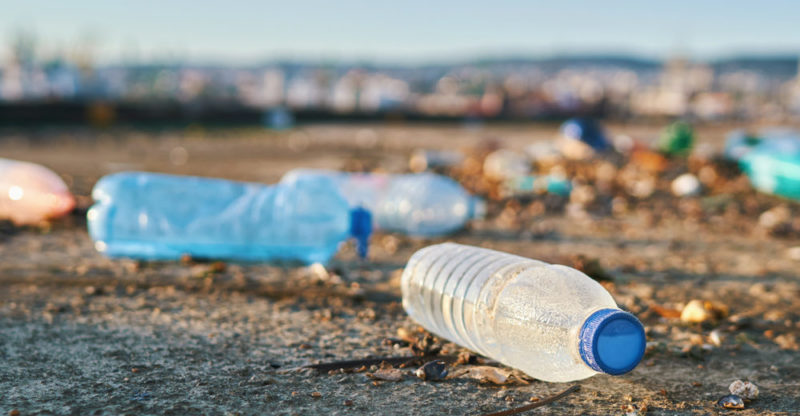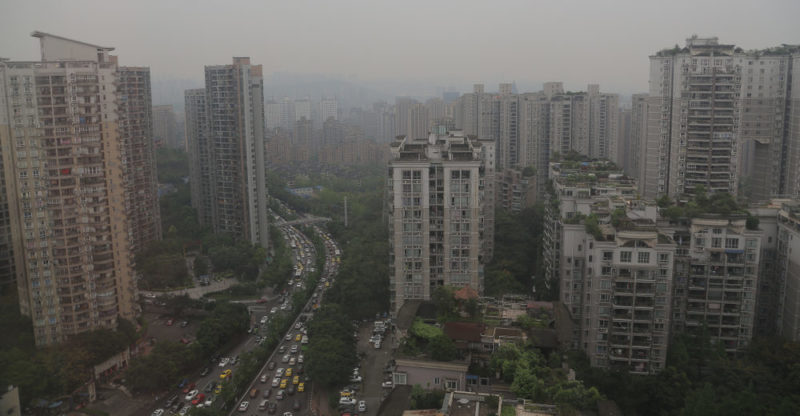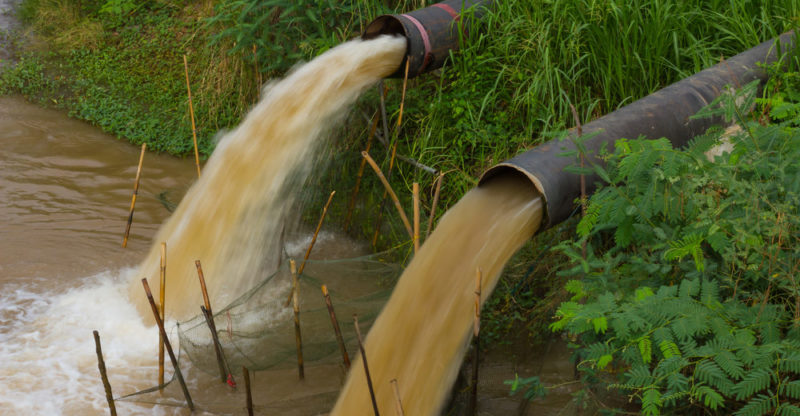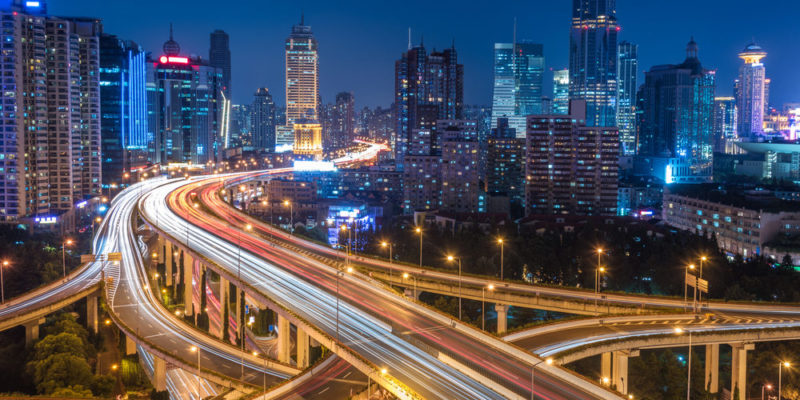We explain what pollution is and what its causes and consequences are. In addition, its general characteristics and solutions.
What is Pollution?
Pollution is the accumulation of harmful agents for living beings in some sector of the environment. These agents can be chemical, physical or biological. Various organisms can be affected: humans , animals or plants .
In the environment there are constantly harmful agents for living beings . However, pollution is only considered when substances have accumulated to such an extent that their concentration changes the balance of the ecosystem .
Pollution can be classified according to the causes that cause it (natural or artificial) or by the environments in which it is concentrated: air , soil or water . In recent decades, pollution has also been classified depending on the aspect of the ecosystem that it modifies: light, acoustic, or thermal.
Natural causes of pollution

Pollution is considered to have natural causes when it is caused by phenomena that were not triggered by human activity. For example:
- Tidal waves. The large waves caused by tidal waves by flooding the land with salt water affect the mineral balance of the soil and can even make it infertile.
- Mushrooms . They are organisms that emit gases that are toxic to humans. Although the concentration of these gases in the open air is not toxic, they do cause pollution in closed and humid places, such as basements.
- Forest fires. The combustion that occurs in fires emits large amounts of carbon dioxide , polluting the air. In addition, the remains of combustion, in the form of ash, form a layer on the ground that prevents vegetables from growing. However, currently most of the fires are caused by the action of man.
Artificial causes of pollution

The various economic activities of man cause pollution . The amount of pollution from man-made causes is significantly higher than that caused naturally. Global pollution has skyrocketed since industrialization , at the end of the 18th century.
Among the artificial causes of pollution, one of the main ones is transportation : the various fuels used for trains, cars, ships and planes generate toxic gases that are concentrated in the atmosphere worldwide.
Another of the great causes of pollution is the garbage generated by large cities . This garbage pollutes the soil, the air and can even contaminate the underground water layers.
Atmospheric pollution

Air pollution is the presence of toxic substances in the air. When the air is polluted, it can affect other sectors of the ecosystem. For example, when it rains where there are polluting gases in the air, the water washes away those pollutants forming acid rain , which in turn pollutes the water and the soil.
The main polluting gases are: Chlorofluorocarbon (CFC), Carbon Monoxide, Carbon Dioxide, Sulfur Dioxide.
Soil contamination
All living beings depend on the organic and inorganic balance of the soil, since plants come from it , which start the food chain. Plants cannot grow from polluted soils , or plants containing these pollutants grow and transmit them to animals or humans who consume them.
Just as toxic substances are dumped into rivers , they are also dumped on land, without taking into account the multiple organisms that live on it. In addition, contamination of the land can result in water contamination of groundwater layers.
Water pollution

Water pollution is the contamination of water . Water is considered contaminated when it is not suitable for consumption by humans or animals. Since the beginning of industrialization, factories used rivers to dispose of chemicals that were unwanted by-products of their economic activity.
Many cities also deposit their waste in streams . At first this did not seem to have consequences, since it seemed that the waste "disappeared" in the direction of the sea . However, over the decades, the accumulation of this waste contaminated not only small surfaces such as lakes and rivers, but also areas of the sea.
Radioactive pollution

Radioactive contamination can be of natural origin, since in the earth's crust there are radioactive isotopes that are found in all natural material. However, most of the radioactive contamination is man-made , caused mainly by industries associated with nuclear power, but also by military use of nuclear bombs whose devastation lingers long after detonation because of the resulting contamination.
Radioactive contamination not only "burns" living beings but also affects their genetics , causing diseases and malformations that can be transmitted for generations.
Light pollution

Light pollution is the irradiation of light, usually concentrated in urban centers . In addition to preventing us from seeing the night sky, it causes sleep disorders in humans and significantly affects nocturnal ecosystems, since many animal species depend on the cycles of light and darkness.
Thermal pollution
Almost entirely, electrical appliances emit heat into the environment . Due to the increasing concentration of these devices in urban centers, the climate and ecosystems are beginning to show their consequences.
However, the greatest danger is found in the water used to cool thermal power plants, since if the hot water is poured directly into a river or the sea, it negatively affects all the organisms with which it comes into contact.
Possible solutions for contamination

It is very difficult to reverse the effects of pollution. Therefore, most of the measures that governments and individuals are carrying out aim to prevent pollution from increasing. For example:
- Garbage reduction. In many cities, garbage is classified between true unusable waste and recyclable materials such as glass , cardboard or metal .
- Use of public transport or bicycles. This is an individual action that reduces the toxic emissions produced by transportation.
- Control of industrial waste. The different governments regulate the way in which toxic substances must be disposed of in such a way as to avoid or reduce their environmental impact .
Consequences of contamination
In the first place, pollution affects the quality of life of the human being . Air pollution causes everything from minor ailments such as headaches or mild respiratory or skin conditions, to life-threatening diseases such as cancer.
On the other hand, air pollution, by affecting the ozone layer , causes global warming , leading to the danger of extinction to various species that depend on a cold environment to survive, such as corals.
Water pollution can cause death in humans and animals. Even when it occurs in the sea, it affects the life of marine animals , for example plastic bags that are swallowed by fish and marine mammals .
The above content published at Collaborative Research Group is for informational and educational purposes only and has been developed by referring reliable sources and recommendations from experts. We do not have any contact with official entities nor do we intend to replace the information that they emit.
Passionate about understanding and contributing to a world that does not stop changing. New forms of Work, Sustainability and Technology. For many years he has worked as a creative for large international companies. He has a Ph.D. in information technology and he has been doing quantitative research in the interdisciplinary areas of information systems, cyber security, data analytics and artificial intelligence. He continue to look for creative solutions through technology to help companies to be more humane and sustainable..
Leave a reply
Your email address will not be published. Required fields are marked *Recent post

Sport: What Is It, Types, Risks, Features, Characteristics and Examples

Dogs: Emergence, Features, Characteristics, Feeding and Breeds

Story: Definition, Elements, Structure, Features and Characteristics

